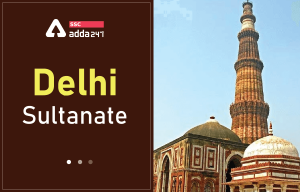Table of Contents
Lala Lajpat Rai, an extremist leader, and Indian Freedom fighter was born on 28 January, 1865, in a Punjabi Hindu family, as a son of Urdu and Persian government School teacher Munshi Radha Krishan and his wife Gulab Devi, in Dhudike, Punjab. He played a significant role in Indian Independence Movement. Lala Lajpat Rai was popularly known as Punjab Kesari and Lion of Punjab. He was part of the famous radical trio Lal Bal Pal (Lala Lajpat Rai, Bal Gangadhar Tilak, and Bipin Chandra Pal), They together advocated the Swadeshi Movement in India, which involved the boycott of all imported goods and the use of Indian-made goods. He also initiated the foundation of the Punjab National Bank.
Lala Lajpat Rai’s Early Life
Lala Lajpat Rai received his initial education in a Government Higher Secondary School in Rewari, Punjab province, where his father was posted as an Urdu teacher. In 1880 Lajpat Rai joined Government College at Lahore to study Law, while studying there he came in contact with future freedom fighters, such as Lala Hans Raj and Pandit Guru Dutt. He was influenced by the Hindu reformist movement of Swami Dayanand Saraswati and became a member of the existing Arya Samaj Lahore (founded 1877) and founder editor of Lahore-based Arya Gazette.
In 1886, he moved to Hisar and started to practice law and became a founding member of the Bar council of Hisar along with Babu Churamani. He also founded the Hisar district branch of the Indian National Congress and reformist Arya Samaj. To shape the political policy of India to gain independence, he also practiced journalism and was a regular contributor to several newspapers including The Tribune. In 1886, he helped Mahatma Hansraj establish the nationalistic Dayananda Anglo-Vedic School, Lahore. In 1914, he quit law practice to dedicate himself to the freedom of India.
Lala Lajpat Rai’s Contribution to India’s Freedom
The British government saw Lajpat Rai as a threat because of his growing influence in the freedom movement. They even called him the center of the entire movement and described him as someone who deeply hated British rule. Because of his activities, the British sent him to prison in Mandalay (now in Myanmar) in 1907 without even giving him a trial.
Lajpat Rai’s fight against the British didn’t stop there. He led protests against the terrible Jallianwala Bagh massacre, where British soldiers killed many innocent Indians. He also traveled to other countries like the USA, Japan, and England to talk about India’s struggle for freedom. In England, he even joined a political party called the Labour Party.
In 1917 he moved to the United States and founded the Indian Home Rule League of America in New York. He stayed in the United States from 1917 to 1920. Because of his important role in the freedom movement, Lajpat Rai was chosen as the president of the Indian National Congress in 1920. This was a big honor because the Congress was the main organization fighting for India’s freedom. He also cared a lot about the rights of workers and became the president of a group that fought for their rights.
As a forward-thinking leader, Lajpat Rai started several important institutions. He founded the Punjab National Bank, which is still a major bank in India today. He was also associated with the Lakshmi Insurance Company in its early stages in 1894 and was responsible for the construction of the Lakshmi Building in Karachi.
Lajpat Rai was known for his bravery and often led protests from the front. In 1928, the Simon Commission was set up. The Indian protesters chanted “Simon go back” and carried black flags. It was during this protest the police lathi charge occurred against the protestors. Lala Lajpat Rai was personally assaulted and injured brutally, he subsequently addressed the crowd with his famous words and said, “I declare that the blows struck at me today will be the last nails in the coffin of British rule in India”.
In 1928, he led a protest against the Simon Commission (a group of British people who came to India to suggest changes in how India was governed). The Indian protesters chanted “Simon go back” and carried black flags. Lala Lajpat Rai was personally assaulted and injured brutally, he subsequently addressed the crowd with his famous words and said, “I declare that the blows struck at me today will be the last nails in the coffin of British rule in India”. These injuries led to his death on November 17, 1928. His death made many Indians, including the young Bhagat Singh, very angry and more determined to fight against British rule.
Lajpat Rai was one of the few leaders who understood the growing divide between different religious groups in India. He worked hard to unite Hindu society and believed this unity was necessary to fight effectively against the British. He was also actively involved with an organization called Hindu Mahasabha, which focused on Hindu interests.
Lala Lajpat Rai as a Author
Apart from being a great freedom fighter and leader, Lala Lajpat Rai was also a noted writer. Here are some of the books which he wrote:
The Story of My Deportation, 1908.
Arya Samaj, 1915.
The United States of America: A Hindu’s Impression, 1916.
The problem of National Education in India, 1920
Unhappy India, 1928.
England’s Debt to India, 1917.
Young India: Young India; an interpretation and a history of the nationalist movement from within.




 Delhi Sultanate, Notes on Dynasties of M...
Delhi Sultanate, Notes on Dynasties of M...
 Free Study Material for SSC CGL 2025, Do...
Free Study Material for SSC CGL 2025, Do...
 Free Study Material for CBSE Junior Assi...
Free Study Material for CBSE Junior Assi...


